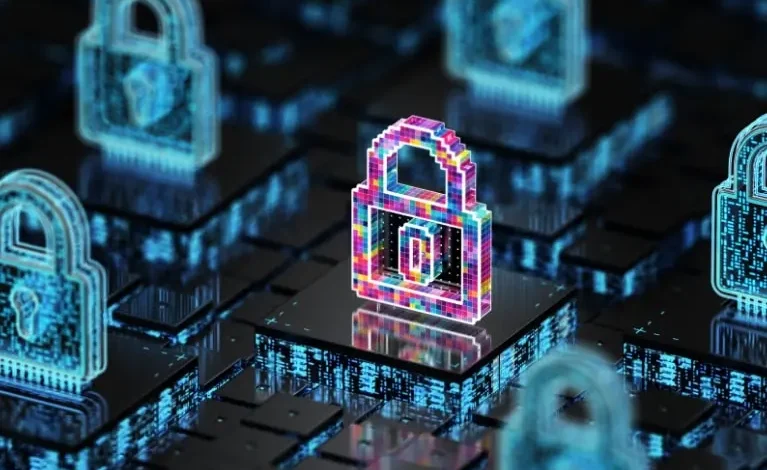Zero Trust Security: Why It’s the Future of Cyber Defense

Zero Trust Security represents a paradigm shift in cyber defense strategies. By prioritizing continuous verification and strict access controls, it addresses the growing complexities of modern threats. This model assumes that both internal and external risks persist, necessitating a proactive approach. As organizations face increasing cyber vulnerabilities, understanding the fundamental principles of Zero Trust becomes critical. What implications does this have for the future of organizational security and data protection?
Understanding Zero Trust Security
Zero Trust Security represents a paradigm shift in the approach to cybersecurity, emphasizing the necessity of continuous verification and stringent access controls.
In the evolving cybersecurity landscape, organizations must adopt robust data protection strategies that assume potential threats exist both inside and outside their networks.
This proactive stance not only fortifies defenses but also fosters a culture of vigilance, ensuring freedom from security breaches.
Key Principles of Zero Trust
The key principles of Zero Trust Security focus on strict verification, minimal access, and ongoing surveillance.
By requiring authentication for every access request, organizations mitigate risks associated with unauthorized access.
Additionally, implementing a least privilege access model and maintaining continuous monitoring ensures that potential threats are identified and addressed proactively.
Verify Every Access Request
Effective security frameworks increasingly emphasize the critical need to verify every access request within the context of Zero Trust principles.
Access request validation ensures that only authenticated users gain entry, while secure network segmentation further mitigates risks by limiting access to sensitive data.
This proactive approach fosters a culture of vigilance, empowering organizations to safeguard their digital environments against potential threats.
Least Privilege Access Model
Often regarded as a fundamental principle of Zero Trust security, the Least Privilege Access Model advocates for granting users the minimum level of access necessary to perform their job functions.
This approach minimizes potential vulnerabilities by employing stringent access controls, thereby reducing the risk of unauthorized data exposure.
Implementing least privilege not only enhances security but also empowers users by reinforcing accountability and transparency within their roles.
Continuous Monitoring and Analytics
Continuous monitoring and analytics play a crucial role in the Zero Trust security framework by ensuring that all user activities and network behavior are systematically observed and analyzed.
Employing real-time analytics and behavior monitoring, organizations can swiftly identify anomalies and potential threats.
This proactive approach not only enhances security measures but also empowers users, fostering a sense of freedom within a secure digital environment.
The Importance of Identity Verification
In the context of Zero Trust Security, identity verification is paramount for safeguarding sensitive information.
Implementing multi-factor authentication, continuous user monitoring, and role-based access control ensures that only authorized individuals can access critical resources.
This proactive approach not only mitigates risks but also enhances overall system integrity.
Multi-Factor Authentication Necessity
While traditional security measures may suffice in less complex environments, the adoption of Multi-Factor Authentication (MFA) has become essential in the realm of Zero Trust Security.
Multi-factor methods enhance identity verification, significantly reducing the likelihood of unauthorized access. The authentication benefits are clear: increased security, improved user confidence, and a proactive stance against evolving cyber threats, ensuring individual freedom in an increasingly interconnected world.
Continuous User Monitoring
The implementation of continuous user monitoring serves as a critical component in the Zero Trust Security framework, emphasizing the necessity of ongoing identity verification.
By utilizing behavioral analytics, organizations can establish baseline user behaviors, enabling effective anomaly detection.
This proactive approach ensures that any deviations are swiftly identified, thereby enhancing security posture while preserving user autonomy in a landscape where freedom and safety must coexist harmoniously.
Role-Based Access Control
Implementing Role-Based Access Control (RBAC) is essential for reinforcing identity verification within a Zero Trust Security framework.
By establishing clear role definitions and tailored access policies, organizations can effectively manage user permissions while adhering to security protocols.
Regular risk assessments, compliance measures, and access audits further enhance identity governance, preventing privilege escalation and streamlining authorization workflows to ensure a robust defense against potential breaches.
Implementing Zero Trust in Your Organization
Adopting a Zero Trust framework requires organizations to reevaluate their existing security policies and practices comprehensively. Effective implementation strategies encompass risk assessment, policy development, and technology integration. A strong security culture must be fostered through employee training and vendor selection, ensuring compliance requirements are met. Incident response plans should be established to mitigate potential breaches.
| Strategy | Focus Area | Outcome |
|---|---|---|
| Risk Assessment | Threat Identification | Informed Decision Making |
| Policy Development | Framework Alignment | Consistent Security Protocols |
| Employee Training | Awareness & Skills | Enhanced Security Culture |
| Technology Integration | System Cohesion | Streamlined Operations |
Overcoming Challenges in Zero Trust Adoption
Effective implementation strategies for Zero Trust security often reveal a range of challenges that organizations must confront.
Barriers to implementation frequently stem from outdated infrastructures and inadequate resources.
Additionally, cultural resistance within teams can hinder progress, as employees may feel threatened by stringent security measures.
To overcome these obstacles, organizations must foster a culture of collaboration and continuous education, promoting understanding of Zero Trust principles.
Future Trends in Zero Trust Security
What innovations are shaping the future of Zero Trust security?
Future technologies are evolving to address emerging threats while navigating compliance challenges. User education and integration strategies will become pivotal in aligning with industry standards.
Organizations must consider cost implications and scalability issues, ensuring their culture prioritizes privacy concerns.
These elements will collectively define the trajectory of Zero Trust security in an increasingly complex cyber landscape.
Conclusion
In conclusion, Zero Trust Security represents a seismic shift in cyber defense strategies, fundamentally reshaping how organizations approach security. By placing unwavering emphasis on identity verification and minimal access rights, this model not only fortifies defenses against evolving threats but also cultivates a culture of vigilance and responsibility. As cyber threats become increasingly sophisticated, embracing Zero Trust is not just prudent—it is essential for organizations wishing to remain unbreached fortresses in the digital landscape.




